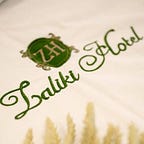Walk in Thessaloniki City Center
If you are visiting Thessaloniki for only a couple of hours and you want to take a glimpse of Thessaloniki, this guide is for you. A perfect way for you to get acquainted with the city’s streets and monuments in the city center. Supposing you want to make time for shopping and some other activities during your stay, this walk should take for about two hours or less.
Starting point for this walk will be the main Aristotelous Square. This is the cities central and most beautiful square filled with cafes and buildings with great architecture.
In the area around the Aristotelous square is also the Ladadika district. It is a place you must visit to experience the authentic Thessaloniki. Ladadika is located near the Port of Thessaloniki and for centuries was one of the most important market places of the city. Its name derives from the many olive oil shops of the area and the word Ladadika literally means olive shop. Full of charming little streets and shops, it is a great place to lose yourself for a while.
After exiting Ladadika, walk on Egnatia to your right, towards the white marble statue of Venizelos a Greek politician from the beginning of the 20th century, who is considered the father of Modern Greece. To the left lies the Panagia Halkeon church, built in 1028 as a Christian church, made into a mosque during the Ottoman rule and retransformed into a church after 1912. To the right of the statue lies the Bey Hamam, the largest surviving Ottoman hamam in Greece.
After a short walk after the Venizelos statue you will come across the Roman Forum. Today we can see the ruins that offer us a glimpse of the magnificence of the buildings that once stood there. The Forum was constructed by the Romans in the late 1st century A.D and remained active up to the 4th century.
The most preserved and most impressive building in the Forum Complex is the ancient amphitheater or Odeon as it was called. The entire complex was organised around a square that was used as a meeting or gathering place. Here you can see extremely well preserved “Cryptoporticus” semi — subterranean corridors, one of the more unique feature of the Roman architecture. If you enter them and follow through the end you will discover the Forum’s underground museum. The entrance is not easy to find, so most visitors miss the opportunity to visit this place. This is one of the smaller museums of the city, but it can give you valuable insights in Thessaloniki history.
Close by the Forum ruins you will find the basilica of Agios Dimitrios. Dedicated to Saint Demetrius, the patron saint of Thessaloniki, it is located on the place of his martyrdom. It is part of the site Palaeochristian and Byzantine Monuments of Thessaloniki on the list of World Heritage Sites by UNESCO
Walk eastwards on the large avenue in front of the Agios Dimitrios basilica through Agios Dimitriou Street and after a five minute walk you will see the Turkish Consulate, in whose grounds survives the house where Kemal Ataturk was born and lived while he was young. Ataturk was the founder of the modern Turkey, so a visit to the Ataturk museum is a must for any visitor from Turkey.
After the Turkish Consulate walk towards the sea down the Apostolou Pavlou Street and you will come across Rotonda, a huge cylindrical Roman building built in 306 AD by Emperor Galerius. During its 1700 year long history its use was changed many times. Originally it was meant to be a mausoleum or a roman temple. From the 400 AD it is a Christian temple decorated with early Christian mosaics, sadly just a few fragments still remain. After more than a millennium as a Christian church, Rotunda was converted in a mosque during the Ottoman rule in the year 1590 AD. The minaret was then built, and it still stands today as a testimony to Thessaloniki’s multicultural spirit. It was preserved when Rotunda was turned in a Christian Church once more after the liberation of Thessaloniki in 1912.
Galerius was a great warrior renowned for defeating the Persians and capturing their capital. To commemorate his triumph, Galerius built a great Arch in Thessaloniki. The Arch of Galerius or Kamara as it is called was adorned with beautiful sculptures representing the famous battles fought in the campaign. Also the Emperor is depicted riding a powerful horse while his enemies surrender before him.
The Kamara is Thessaloniki’s favorite meeting point, due to its central location and the fact that Egnatia St. is served by many buses and the nearby student campus and all the universities.
After the Kamara you can continue your walk among the city streets and get lost for a while to explore and to find some places for yourself. You can always take a coffee break or grab something to eat. Or you can go shopping in the city center or you will have time for other planned activities for your visit to Thessaloniki
This article was brought to you by Zaliki Boutique Hotel Thessaloniki
